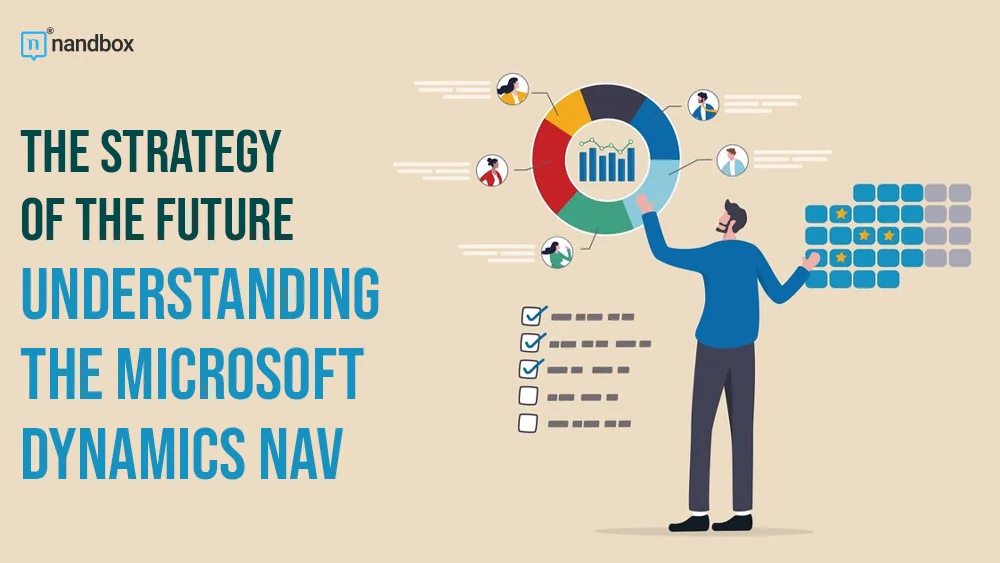Microsoft Dynamics NAV is an efficient ERP system that helps to manage organizational processes and functions across industries. This guide will detail what Dynamics NAV is, its features and advantages, availability of deployment models, and factors to consider when implementing Dynamics NAV, as well as tips for getting the most out of Dynamics NAV.
What Enterprise Resource Planning System is this: Microsoft Dynamics NAV?
Microsoft Dynamics NAV, also called Navision, is a powerful ERP system that can manage and organize central business application processes in different departments. It offers a suite of integrated modules that cover a wide range of functionalities, including:
Financials:

All of this includes balance sheets and trial balance sheets as general ledgers, accounts payable/receivable, cash flow, and fixed assets. Get visibility into the business’s performance in real-time.
Supply Chain Management:
Manage supplier, inventory, warehouse, and transportation. Make the supply chain more efficient.
Manufacturing:
You can manage costs and schedules better. You can plan production and capacity better, and you can better plan product costs. Supervise the shop floor activities.
Sales and Marketing:
Enhance the existing sales force effectiveness by increasing the capacity of sale management, sales forecasts, correcting contacts, leads, opportunities, and management of most of the marketing campaigns.
Service Management:
Coordinate contract, warranty, case, resolution and resources between customer support, field services and after-sales.
Human Resources:
Manage employee data and files, including time and attendance, payroll, talent management, and training management.
Project Management:
Outline schemes, time and cost estimations and allocations, and monitoring of project progress from one all-inclusive package.
Major Advantages and Capital Features of Microsoft Dynamics NAV
Microsoft Dynamics NAV presents a vast array of tools elaborated in this paper, making it a valuable option to support the business that aims to increase its performance and implement changes in order to react to market competition.
Industry-Specific Functionality:
Developed for different industries like manufacturing, distribution, retail, service, construction and many others, with industry standards included.
Scalability and Flexibility:
It caters to your business requirements and is suitable for small businesses and large businesses. Flexible without the need for scripting languages.
User-Friendly Interface:
It is usable with role-tailored dashboards and integrates with Excel and Power BI as an embedded application from Dynamics 365.
Improved Financial Management:
End-to-end control of cash and special legal entities as well as assets, liabilities, P&L and KPI to support management decision-making.
Enhanced Supply Chain Visibility:
Accurate real-time inventory tracking and integration by the logistics department guarantees efficient and effective product delivery and manufacturing.
Increased Efficiency and Productivity:
The company needs it for communication and integration purposes, as well as for coordinating and minimizing mistakes and inefficiencies.
Enhanced Customer Relationship Management:
Comprehensive customer engagement insight and easy compatibility with Microsoft Dynamics 365 Sales.
Data Security and Compliance:
Secure access controls to support the privacy, confidentiality and other regulatory requirements of the enterprise.
Integration with Other Microsoft Products:
Soprod mainly integrates with Office 365, SharePoint, Power BI and Azure Cloud Services.
Selecting the Right of Deployment Model
Microsoft Dynamics NAV provides adaptable choices depending on the business’s requirements and preferences.
On-Premises:
A conventional software deployment model in which applications are run from the company’s servers and controlled by the company. It has full rights and is fully customizable.
Cloud (SaaS):
Pricing subscription models based on Hybrid services provide easy implementation, while cloud-hosted models provide quicker deployment. Updates that are automatic and the ability to access the application using a remote connection were also critical features.
Hybrid:
It combines both on-premise and SaaS environments, which are dependent on the workload and needs of a business organization.
Microsoft Dynamics NAV Implementation Intensive Planning and Evaluation
Undertaking a project like the implementation of an ERP system such as Dynamics NAV is usually a herculean task. Here are some key considerations to keep in mind:
Define Your Business Needs:
Identify current work processes that are done inside the organization. Time-based targets specific to strategic plans. Evaluate all options.
Assemble a Dedicated Team:
Create an implementation team by mixing people from different departments and combining the business and technical requirements.
Data Migration:
Moving data from older systems with just the right restrictions to cause little disruption. Use professionals as necessary on the project.
Customization and Integration:
Identify the need for enhanced configurations and application of interfaces to other software systems when performing a cost-benefit analysis of out-of-the-box features.
Training and Support:
Educate the users on the mapped configurations for the configured process, write and finally establish internal/external helpdesk support.
Ongoing Maintenance and Updates:
Some areas of change management that should be done include: planning a change, testing the change, planning for when the change should occur and for how long the change will be required, organizing for updating the change, defining maintenance windows, defining data backup and defining business continuity and disaster recovery.
Getting the Best out of Microsoft Dynamics NAV
To maximize the benefits of your Microsoft Dynamics Nav implementation, consider the following best practices:
Regularly Review and Optimize:
Apply usage, incorporate new capabilities and redistribute according to the ever-changing business needs.
Leverage Reporting and Analytics:
Leverage the existing BI capabilities to analyse ERP data at strategic corporate, tactical functional, and operational departmental levels.
Stay Current with Updates:
Update often to the latest version in order to enjoy new functions and bug fixes, including security risks and optimizations.
Engage with the Dynamics NAV Community:
Allows for the department to take part in user groups, partner advisory councils, or more general support forums that offer recall about the world and provide knowledge sharing.
Conclusion
Microsoft Dynamics NAV is an integrated ERP solution that includes many aspects that may appeal to organizations that desire to consolidate their operations and data in a single system. To enhance the return on investment of this specific enterprise solution, the needs analysis, the deployment, implementation, and optimization strategies should be aligned with the best practices. The future is promising for businesses that accept tools such as Dynamics NAV in creating a linked, evident, and agile company.
In conclusion, Microsoft’s technology and the nandbox App Builder empower businesses to create efficient, customized mobile apps quickly.




